
views
Making a Simple Cooler

Line the outside of a lidded cardboard or plastic box with foil. Glue the aluminum foil to the outside of the box and lid. Go with a box that’s large enough to hold the items you’d like to keep cold. A shoe box or small plastic tote, for instance, would work well if you just need to store your lunch. Attach the foil to the box so the shiny side faces out. The more light the foil reflects, the less heat the box will absorb. Smooth the foil after you apply it, so that it wouldn't be wrinkling too much. If you’re using a cardboard box, glue foil onto the inside, too. Use a single sheet of foil large enough to cover the entire interior. Carefully mold the foil into the corners, and try not to tear it. Lining the inside with foil can help keep the cardboard from getting soggy.
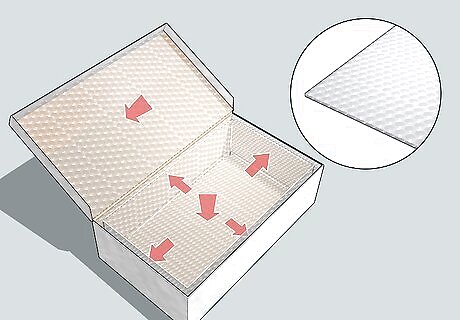
Glue bubble packaging, thick fabric, or packing peanuts inside the box. Glue your insulating material to the lid’s underside and to the bottom and sides of the box’s interior. Recycled packaging materials, thick nylon, or cotton are all good choices. Avoid covering the lip of the lid with insulating material, and make sure it can still fit over the box.
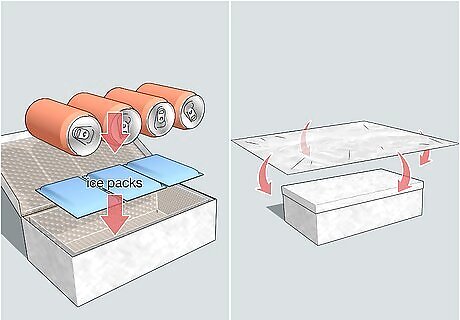
Seal the box with foil if the lid doesn’t tightly close. Place an ice pack and the items you’re storing into the box, then cover it with the lid. If you used a plastic container, it should seal tightly. To seal a cardboard box, place a sheet of foil over the lid, fold it over the sides, then crumple it tightly around the box. The box should keep your items cold for about 4 hours. If possible, keep the box away from direct light and sources of heat.
Creating an Insulated Box

Remove the top flaps from a cardboard box. Use a pair of scissors or utility knife to cut off the top flaps. Keep in mind you’ll be building layers of foam about 6 in (15 cm) thick inside the box. Choose a box large enough to hold all of that insulation and still have room to store foods and drinks. For example, if you use a 24 by 24 in (61 by 61 cm) box, the space available for storage will be 18 by 18 in (46 by 46 cm). A cardboard box is the easiest choice, but a large plastic tote would work. You could also make your own box out of wood.
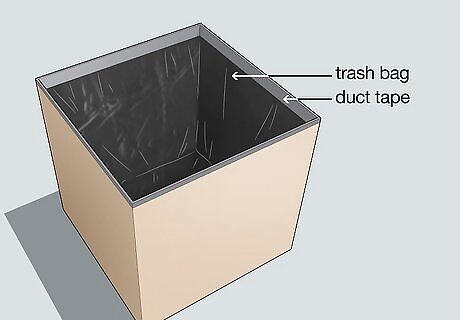
Line the box with a trash bag, shower curtain, or plastic tablecloth. Place a trash bag, or another type of waterproof material, into the box as if you were lining a trash can. Press the bag into the box’s corners, and take care not to tear the bag. Keep the bag flat against the sides of the box, then trim the bag so it’s flush with the top of the box. Duct tape the bag to the top of the box; add strips of tape along the box’s entire top edge. Give the bag some slack so there’s extra material at the bottom corners. It’ll tear easily if it’s too tight. The waterproof layer will help keep melted ice or condensation from getting the cardboard soggy. A trash bag is inexpensive and readily available, but a shower curtain or plastic tablecloth would be sturdier.
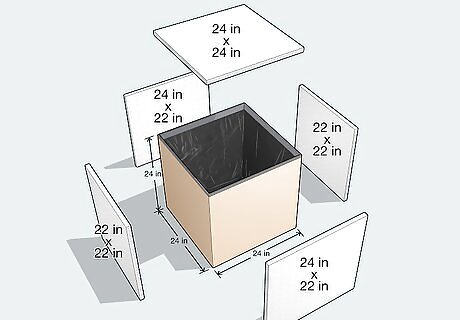
Cut 5 panels of 1 in (2.5 cm) foam to line the inside of the box. Use craft foam boards or sheets of foam board insulation. Measure the box’s bottom and sides, cut a panel that matches the box’s bottom, and make the side panels 2 in (5.1 cm) shorter than the box. Cut 2 of the side foam panels 2 in (5.1 cm) shorter to account for the thickness of the other 2 panels. Suppose you have a 24 by 24 by 24 in (61 by 61 by 61 cm) box; make 2 of the panels 24 in (61 cm) long. Since the panels are each 1 in (2.5 cm) thick, make the other 2 panels 22 in (56 cm). Cut with the grain of the foam to keep the edges straighter.
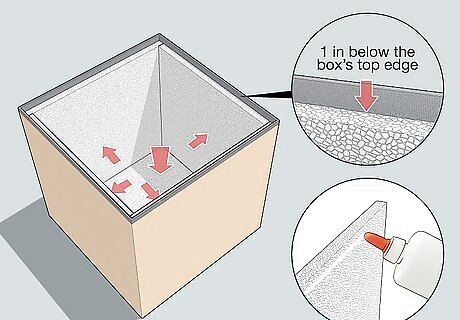
Glue the foam panels inside the box. Start by gluing the bottom board to the base of the box. Take care not to tear the waterproof layer. Then glue a foam panel to each side of the box's interior. Once they’re glued into place, the tops of the side panels should be 1 in (2.5 cm) below the box’s top edge. Each side is 2 in (5.1 cm) shorter than the box, but the bottom foam panel adds an extra 1 in (2.5 cm) to their height. To make the glue dry faster, don't use it in excess and make sure to apply it onto the dry surface.
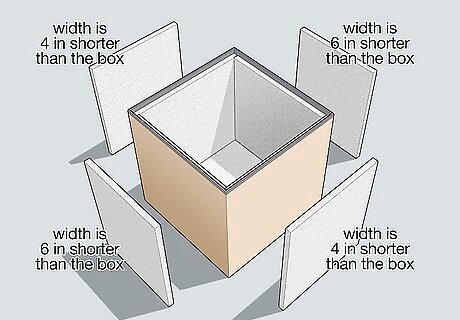
Use 4 more foam panels to create an inner box. Make 2 of the panels about 4 in (10 cm) smaller in width than the sides of the box. Cut the other 2 panels 6 in (15 cm) smaller than the box’s sides. All 4 sides should be 1 in (2.5 cm) shorter than the height of the box. Glue the 4 panels together to make an inner box. This smaller inner box is actually the storage space. You'll fill the gap between the inner foam box and the panels that line the cardboard box with insulation. All of these layers of insulating material will help keep the cooler nice and cold.
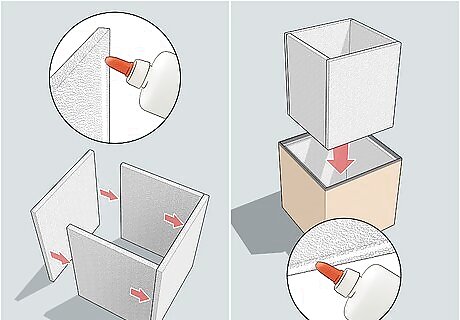
Glue the inner box into place. Center the foam box inside the cardboard box. There should be a 3 to 4 in (7.6 to 10.2 cm) space between the 2 sets of foam panels on all 4 sides. After double checking the fit, glue the inner foam box into place.
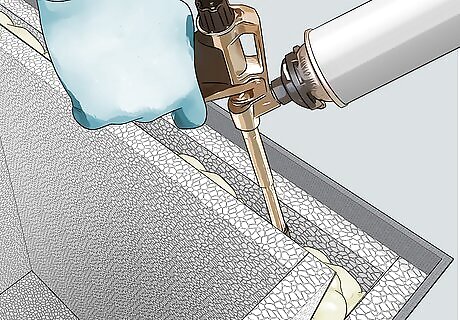
Fill the gaps between the panels with vermiculite or spray foam. Pour vermiculite between the panels, or use spray foam insulation. If you use spray foam, pause between applications to allow the foam to expand. If it expands beyond the tops of the panels, give it an hour to dry, then trim the excess foam with a utility knife. In a pinch, fill the gap with packing peanuts, bubble wrap, or Styrofoam. Fiberglass insulation would also work.
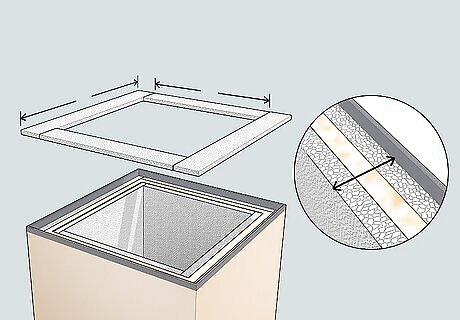
Make 4 strips of ⁄2 in (1.3 cm) foam board. Cut strips of foam wide enough the cover the insulation-filled gaps. If each gap is 4 in (10 cm) wide and each foam panel is 1 in (2.5 cm) thick, the cover strips should be 6 in (15 cm) wide. Cut 2 of the strips, then set them over the gaps on parallel sides of the box. Measure the length between the 2 covers, then cut 2 more strips to match that length. Be sure to use ⁄2 in (1.3 cm) thick foam board for the strips to leave room for the box’s lid.
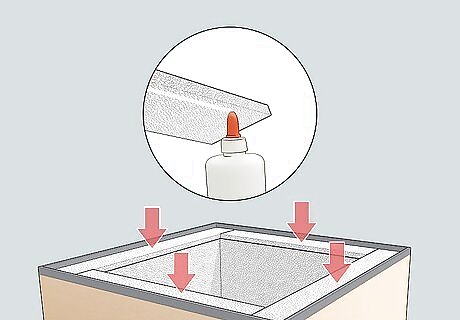
Glue the cover strips over the gaps. Apply beads of craft glue over the foam panels that line the cardboard box and the ones that form the inner box. Then set the cover strips into place over the insulation-filled gaps. Remember to place the longer cover strips across from each other.
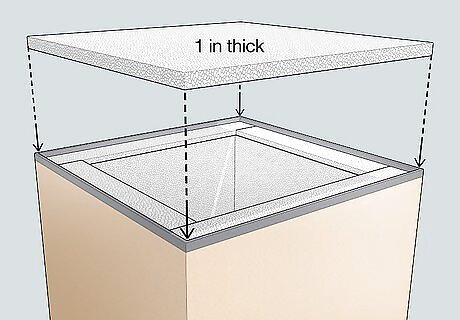
Use a sheet of 1 in (2.5 cm) foam for the lid. Measure the perimeter of the top of the box, and cut a foam panel to match. Since the strips that cover the insulation-filled gaps are ⁄2 in (1.3 cm) thick, there should be a ⁄2 in (1.3 cm) lip formed by the sides of the cardboard box. This lip should hug the sides of the lid. If you’d like, glue handles or knobs to the top of the lid so it’s easier to remove. If you made a wooden box, you could make a wooden, foam-lined lid and join it to the box with a hinge.
Sewing an Insulated Lunch Bag
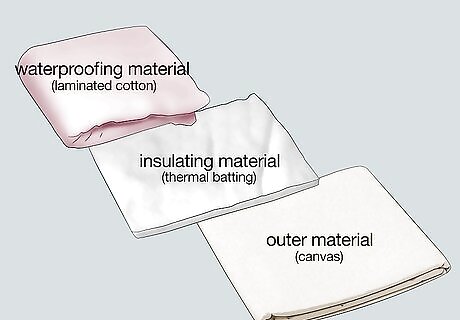
Select waterproofing, insulating, and outer materials. Use waterproof material for the innermost layer, insulating material for the middle layer, and a fabric you find attractive for the outer layer. Laminated cotton, PUL lining, and vinyl are your best options for waterproof materials. If you want to stick with recycled materials, you could use a plastic tablecloth or a plastic shower curtain. Thermal batting, which you can find at a craft or fabric store, is the best insulating material. If you're on a budget, you can recycle thin flexible foam or bubble wrap. Thin craft foam or packing foam might work, but the lunch bag will be stiffer. Pick a durable, easy-to-clean material for the outer layer, like canvas or denim.
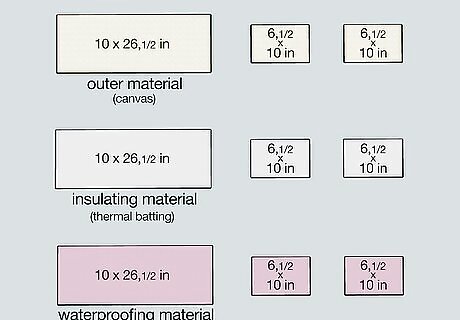
Make 3 rectangles made of each material. For each material, cut a 10 by 26 ⁄2 in (25 by 67 cm) rectangle. Then cut a pair of 6 ⁄2 by 10 in (17 by 25 cm) rectangles. You should have 1 large and 2 smaller rectangles made of each of the 3 materials, or 9 total rectangles.
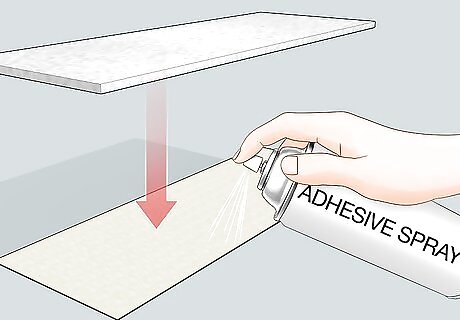
Baste the insulation to the outer fabric. Spread the outer fabric rectangles flat on your work surface. Spray a small of amount of fabric adhesive around the edges, corners, and center of the outer fabric, line up a corresponding piece of thermal batting over it, then press the fabric and batting together. Repeat the steps to baste the other 2 sets of fabric and batting rectangles. Look for spray adhesive online or at craft and fabric stores. Spray basting is the easiest method of attaching the batting to the outer fabric. You could also hold them together by pinning them ⁄4 in (0.64 cm) from the edges.
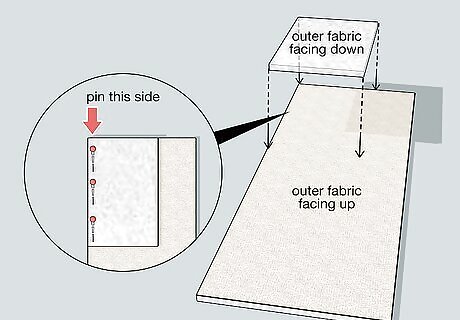
Pin 1 side panel of the outer material to the main section. Spread out the large rectangular section of basted outer material with the right side, or outer fabric, facing up. Then lay a smaller rectangle of basted outer material over the large rectangle with the right side down. Align the upper left edges of both rectangles, and pin together their left long edges. Weave the pins into the fabric rectangles ⁄4 inch (0.64 cm) from the edges. Make sure the long and short sides of the rectangles are aligned. Position the rectangles so their short sides are at the top and bottom and the long sides are at the left and right.
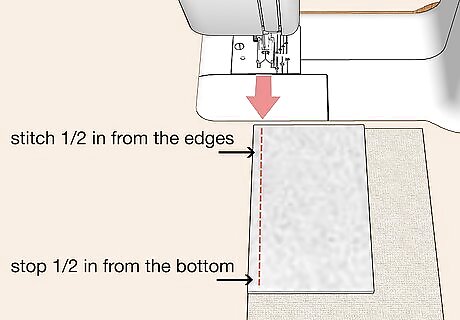
Sew the pinned edges of the side and main panels. Stitch down the pinned sides of the panels ⁄2 in (1.3 cm) from the edges. Begin at the top corner and work your way down the long side. Stop ⁄2 in (1.3 cm) away from the bottom left corner of the side panel. Use this ⁄2 in (1.3 cm) seam allowance, or the distance between the stitch line and the edge of the fabric, for all of this project’s stitches.
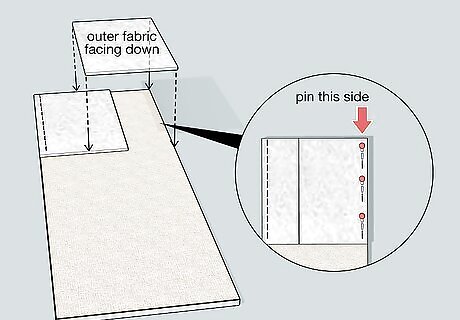
Pin the second side panel to the main body. Set the second panel over the main body with the outer fabric facing down. Align the upper right corners of the main panel and second side piece, and pin down their long sides on the right.
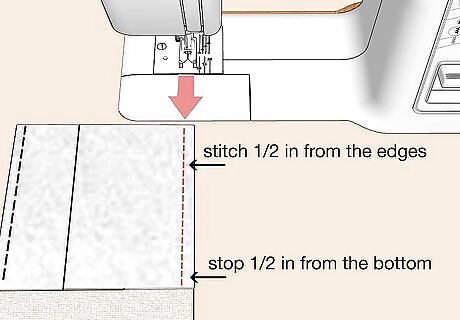
Stitch together the second side panel and main body. Sew along the pinned right edges of the main and side panels. Stop when you're ⁄2 in (1.3 cm) above the side panel's bottom right corner. The result should be a mirror image of the sewed left side panel. Remember to use a seam allowance of ⁄2 in (1.3 cm).
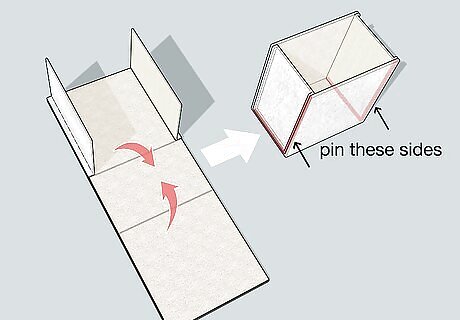
Pin the remaining edges to form a bag shape. Lift the left side panel up straight so it’s perpendicular to the main panel. Fold up the main panel to align its bottom left corner with the top right corner of the left side panel. Pin the panels together from the side panel’s top right corner to its bottom right corner. Repeat the steps to line the right panel’s top left corner with the main panel’s bottom right corner.
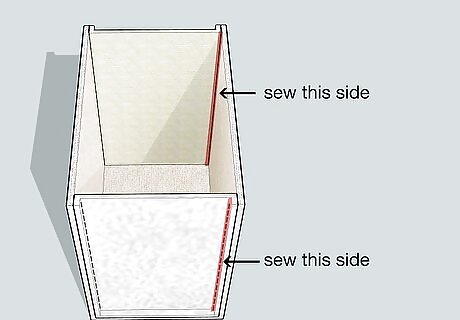
Stitch along the pinned edges. Sew the left side panel to the main panel along the pinned edge. Stop ⁄2 in (1.3 cm) from the bottom edge of the side panel at its bottom right corner. Then sew the right side panel to the main panel along the pinned edges. You should now have a rough bag shape with an open top and unstitched bottom. The long sides of both side panels should now be entirely stitched to the main panel.
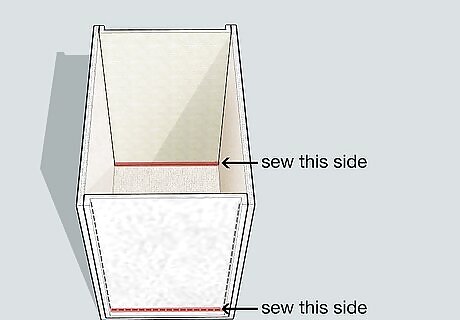
Stitch around the bag’s base to flatten the bottom. Sew the bottoms of the side panels' short sides to the main panel. After sewing each short side, sew additional stitch lines down the bottom of the bag’s long sides to create a flat bottom. All of the bag’s edges should now be stitched except for its top opening.
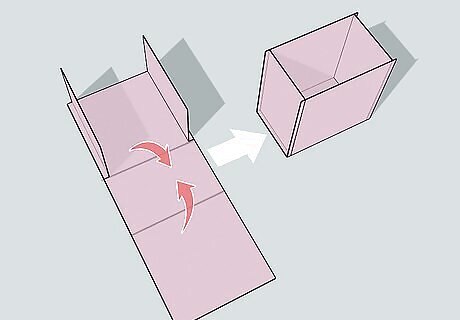
Repeat the process to create the waterproof lining. Lay a side panel of waterproof material over the large waterproof rectangle, and align their upper left corners. Stitch together the panels’ left sides, then stitch the right side of the other panel to the main body’s right side. Fold up the main body to bring its bottom corners to the side panels’ top corners, then stitch the edges to create a rough bag shape. Finish by stitching around the bottom edges of the waterproof lining to flatten the bottom.

Slip the outer cover into the inner lining. Keep the inner lining right-side out, and turn the outer cover inside-out. Then slide the outer cover into the inner lining. The two pieces should fit together snugly. Line up all 4 edges around the opening, and make sure the stitched edges of the side panels are aligned.
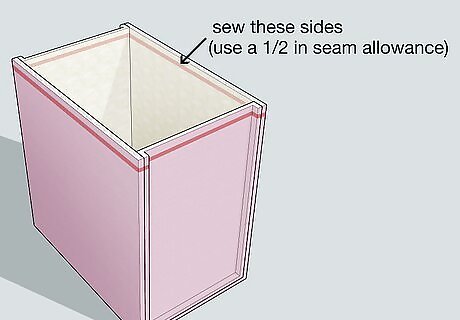
Sew around all 4 top edges. Pin or clip the top edges of the outer bag and liner. Stitch all around the top edge to attach the liner to the outer cover. Again, use a ⁄2 in (1.3 cm) seam allowance. Overlap your beginning and ending stitches to help secure the thread.
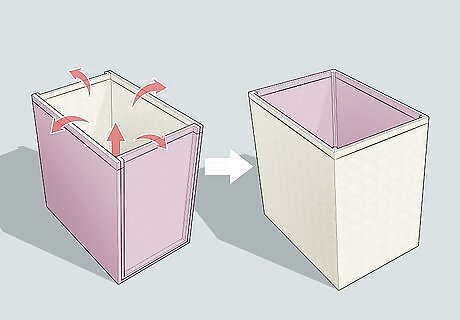
Turn the cooler right-side out. With the outer and inner layers now attached, reach into the bag’s opening. Pull up the bottom, and flip all of the material right-side out. The right side of the outer cover should now be visible from the outside. When you peek inside the cooler, you should be able to see the waterproof layer.
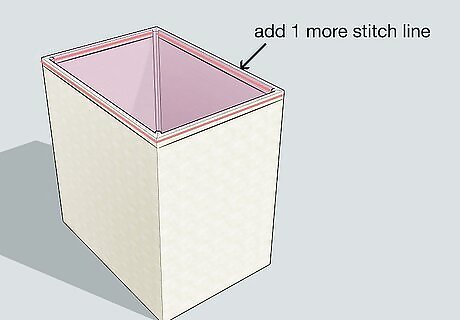
Add 1 more stitch line where the lining meets the outer fabric. Find the ditch, or the line where the waterproof liner meets the outer fabric. Stitch a line directly into the ditch all around the bag’s opening. This last stitch will help stiffen the opening and hold the lining and outer fabric together.
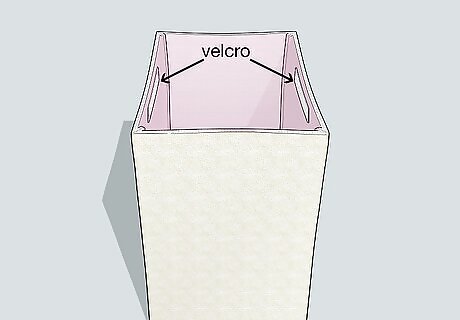
Add Velcro or magnetic strips to close the bag. Use fabric adhesive or a hot glue gun to add Velcro, magnets, or snaps to the insides of the bag’s long edge. To close the bag, pinch the sides inward, then seal the Velcro, magnets, or snaps. There you have it! Enjoy your new handmade insulated lunch bag!




















Comments
0 comment